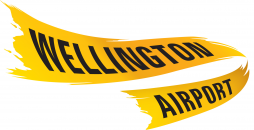Wellington Airport questions Commission’s report
Wellington Airport questions Commission’s report
Wellington Airport is questioning some of the conclusions of the final Commerce Commission report issued today on its forecast airport charges.
Wellington Airport Chief Executive Steve Sanderson welcomed the report’s findings that the airport conducted a transparent and consultative approach to price setting, promoted innovation and operational efficiency, and delivered a quality passenger experience with prudent capital investment.
However, Mr Sanderson questioned the Commerce Commission’s findings on the airport’s forecast future returns.
“Wellington Airport’s effective rate of return is 8.1% which is in the range the Commerce Commission considers as reasonable,” Mr Sanderson said.
“The Commerce Commission’s theoretical model, which looks at future pricing over the next five years and not actual returns, doesn’t apply to the airport. The Commission’s forecast return excludes commercial concessions that benefit the airlines. This means the report has overestimated the airport’s returns in the future – the current charges are below the regulatory benchmark,” Mr Sanderson said.
Wellington’s charges are between those charged by Auckland and Christchurch airports, and in the lower range of Australasian airports in terms of cost per passenger. The current average per passenger landing charge at Wellington is $11.39 and it is forecast to only increase by around 70 cents per year.
“New Zealand’s airport prices are low when compared with airports worldwide with good investment and innovation further demonstrating that the market is functioning well,” said Mr Sanderson.
“Wellington Airport provides strong incentives to support travel and tourism growth and the introduction of new air services, which is evident in the strong growth we have seen in the last year,” Mr Sanderson said.
The report’s positive findings about the airport’s transparency and consultative approach to price setting further demonstrated that the current regime was working. This view was reinforced by the report’s positive benchmarking of airport service quality and innovation, Mr Sanderson said.
“Over the last fifteen years Wellington Airport has invested $300 million in its capacity and service quality. Forecasts indicate around $100 million will need to be invested over the next few years to maintain the current standards, accommodate growth, safety requirements and air service connections. The investment decisions, both past and future, depend on an appropriate regulatory environment which has been the case to date.”
“We are confident the Ministers will recognise the investment that is required to accommodate growth for Wellington Airport and that on Australasian and World benchmarks its airport charges are in the low range.”
Mr Sanderson also noted that report supported the airport’s pricing structure in promoting operational efficiency.
Wellington Airport is also the most cost efficient in Australasia and undertakes disciplined, well managed, innovative investment in airport infrastructure, Mr Sanderson said.
“We look to accommodate expected long term increases in demand by making better use of existing facilities, before looking to expand. The dual use international terminal and swing gates are examples of this,” Mr Sanderson said.
Notes for journalists and editors
The Commission’s report is on the effectiveness of the information disclosure regime for the setting of charges at Wellington Airport. The regulatory regime requires that Auckland, Wellington and Christchurch airports make public specified financial, quality and pricing information to ensure transparency when consulting on and setting airport landing charges. The aim is to ensure that the airports have similar incentives and pressures to suppliers operating in competitive markets.
Wellington Airport was the first airport to have been reviewed following it consulted with airlines about setting airline prices under the Airport Authorities Act last year. This is also the first completed report in an overall assessment of the information disclosure regime for New Zealand’s three main airports. The report for Auckland is due around June and Christchurch’s by the end of the year.
The Airport Authorities Act provides a legal framework for the airport to set sufficient price levels to operate the Airport and provide a fair return on the funds invested to Infratil’s 16,000, mainly New Zealand, shareholders and Wellington City ratepayers. The Airport Authorities Act legislation was retained in Parliament’s recent consideration of the Commerce Act and support by Treasury and the MED in the 2007 reviews of the proposed airport regulation at that time.
Enquiries to
Greg Thomas
Wellington Airport
021 430 435
greg.thomas@wellingtonairport.co.nz
About Wellington Airport
- As a vitally important piece of national infrastructure, Wellington Airport provides a significant ongoing contribution to the region’s economy as well as delivering a return to the city and shareholders on the funds invested.
- Over the next five years Wellington Airport will invest $100m in travel and tourism infrastructure to accommodate passenger growth, safety requirements and air service connections over the next five years.
- The next significant capital development will be the Southern Terminal expansion.. This will provide increased gate lounge space and new toilets, and the expansion of the Southern Apron will increase aircraft capacity to accommodate growth.
- The Airport’s new terminal The Rock is ranked the 4th best terminal in the World and has won 13 architecture and construction awards including the Transport category at the prestigious World Architecture Festival in Barcelona and the Supreme Award at the Registered Master Builders Awards.
- Wellington Airport is owned by Infratil’s 23,000+ mainly New Zealand based shareholders and Wellington City Council.
- In the year ended March 2012, the airport paid a $9m dividend to Wellington City Council, which is the equivalent of $120 per ratepayer.
- Of New Zealand’s major airports, Wellington Airport is the most cost efficient. Its proximity to the CBD also saves travellers time and money.
- By 2030, passenger numbers are expected to double to 10 million. This growth will require a $450m investment in essential infrastructure.. The increase will enable Wellington Airport to generate 11,500 new jobs in the region, sustaining 21,000 full time positions and increasing its contribution to the regional economy to $1.6b a year with flow-on impacts of $3.1b.


